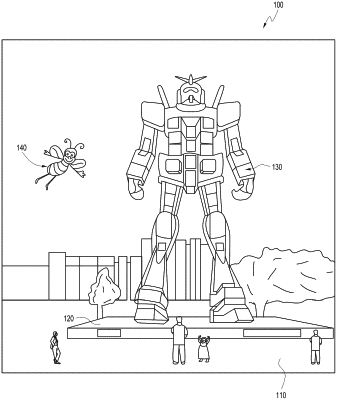| CPC G06T 19/006 (2013.01) [G02B 27/017 (2013.01); G06F 3/011 (2013.01); G06F 3/012 (2013.01); G06F 3/013 (2013.01); G06F 3/015 (2013.01); G06F 3/04815 (2013.01); G06F 3/0482 (2013.01); G06K 7/1408 (2013.01); G06K 19/06009 (2013.01); G06V 40/107 (2022.01); G06F 3/017 (2013.01)] | 20 Claims |

|
1. A method for generating virtual content in a three-dimensional (3D) physical environment of a user, the method comprising:
under control of a hardware processor;
analyzing data acquired from a pose sensor to identify a pose of a user;
identifying a physical surface in a 3D physical environment of the user and at least an object function associated with an object in the 3D physical environment having the physical surface, based at least partly on the pose;
receiving an indication to initiate an interaction with the physical surface;
determining environmental information associated with the physical surface, the environmental information comprising an affordance of the physical surface, wherein the affordance of the physical surface is determined based on a physical environment in which the physical surface is located;
accessing a set of available user interface options associated with the physical surface based on the affordance of the physical surface;
determining a maximum number of user interface options from the set of available user interface options that can legibly fit in a virtual user interface associated with the physical surface;
selecting, based on the maximum number of user interface options that can legibly fit in the virtual user interface on the affordance of the physical surface, and on the object function associated with the object, a subset of user interface options from the set of available user interface options associated with the physical surface, wherein the subset of user interface options selected is less than the set of available user interface options; and
generating an instruction for presenting the virtual user interface containing the subset of user interface options that can legibly fit in the virtual user interface in a 3D view to the user.
|